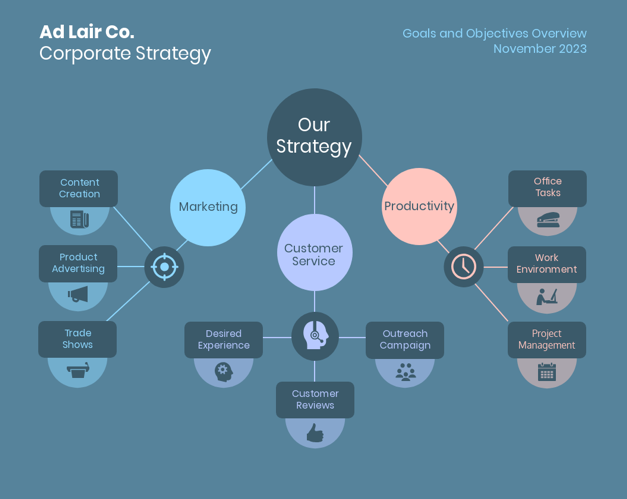The NBA playoffs are well underway and we still have a ton of unanswered questions: Can the Warriors repeat? Can Lebron singlehandedly will his team to victory? Do the Celtics actually have a shot at winning it all? (Yes. Probably not. Step away from the green Kool-Aid.)
If hoops talk isn’t really your thing, that’s OK, because we have something even better in store for you: The Content Marketing Weekly. This time around, we take a look at some of Google’s latest moves, where to find inspiration for high-quality content and a visual spin on project management.
5 Creative New Sources for Content Inspiration
Even the best content marketers hit the wall sometimes. There are moments when the creative well runs dry, and despite your best efforts, there’s just no way to seamlessly fit a Game of Thrones reference into your latest blog content. But don’t go all Ned Stark and lose your head, because over at Search Engine Journal, Gregg Schwartz has some fresh sources of inspiration to power your content.
Some of his recommendations are fairly standard practice – it’s always a good idea to take a look at what your competitors are doing and see what’s working for them – but it’s still sound advice.
Other sources you may be overlooking include your internal teams, especially your sales staff. Arguably no one else in your organization has a better idea of what issues your target audience cares about and what pain points are hitting them hardest.
You can also use social media as a source for creativity, browsing Twitter, LinkedIn and the rest of them to get a sense of what’s trending and what the hottest industry topics are. For a little extra oomph in this department, BuzzSumo lets you plug in target keywords and spits out the most heavily shared blog content using those terms.
The main takeaway here is that there are endless sources of inspiration to draw from, so don’t get discouraged if you’re brainstorming session has stalled out.

Read the whole story here.
Google Confirms It Shortened Search Results Snippets After Expanding Them Last December
So, the truth finally comes out. If you’ve spent the past few months expanding your meta descriptions to account for the longer SERP snippets Google introduced last December, we’ve got some bad news for you: It doesn’t really matter.
According to Search Engine Land, Google confirmed that it had begun trimming search snippets in recent weeks. Back when the tech giant initially started stretching out those extracts, the average length ballooned to more than 300 characters. Now, it has dipped back down to around 160 characters.

To be fair, Google did warn people at the time not to try and write longer meta descriptions for the sake of meeting length guidelines. That’s because there never were any.
“There is no fixed length for snippets. Length varies based on what our systems deem to be most useful,” Google’s Danny Sullivan stated.
If you’re kicking yourself right now, take solace in the fact that you’re probably not alone. But such is life in the content marketing game.
Google’s New Algorithm Creates Original Articles From Your Content
Featured Snippets may have been the first step in Google’s long-term goal to make it quicker and easier for people to find the information they’re looking for without actually clicking on an article or web page.
Search Engine Journal’s Roger Montti reported that a recent research paper published by the tech giant itself shines a light on a new algorithm that could effectively cull useful information from a wide variety of sources and cut out anything deemed irrelevant. It would then generate a new article composed of these different pieces – a Frankenstein’s monster of purely concentrated information, totally devoid of fluff.
Specific details about these “extractive summaries” are still underwraps. For instance, Montti wonders if this content will provide links to its sources (i.e., your content), or cut them out of the equation altogether.
Until we learn more, it’s tough to say what effect this will have on content marketing best practices, but it does bring something into sharp focus that we would all do well to keep in mind: Google’s always looking out for Google.
Check out the whole story.
Want More Productivity? Make Your Strategy Visual
Getting your team on the same page and keeping them there is one of the most challenging aspects of content marketing. You’ve got strategists, writers, designers, videographers and social media members, among others, all working together on an overarching campaign.
Over at the Content Marketing Institute, Nadya Khoja has a bold idea for communicating content goals, managing ongoing campaigns and increasing team productivity: Make it visual.

Khoja suggests using project management software and design assets to create a visual representation for every component of your content marketing strategy. That may include your product roadmap, corporate strategy, high-level company goals or individual tasks that need to be accomplished. By presenting this information in a well-designed visual format, teams can better digest it and have a clearer understanding of what their roles and responsibilities are at any given moment. That means team members are productive, goals are met and the bigwigs in your organization are ecstatic about your content marketing results.
Take a look at the whole article for yourself.
That does it for another round of the CM Weekly, but keep your eyes on this page for more content marketing goodness.




